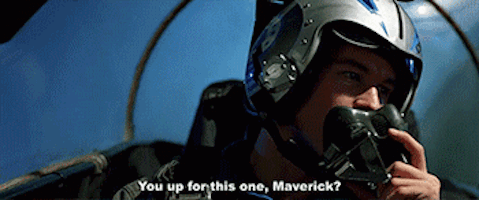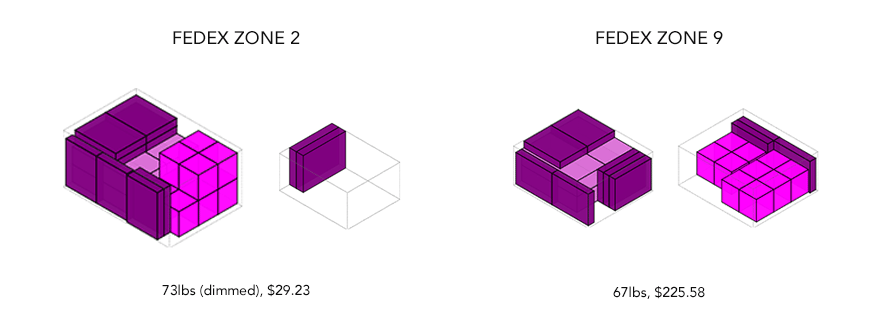Cartonization algorithms can reduce unexpected DIM fees and waste, but did you know that they can help you find the cheapest way to pack an order for whatever carrier zone you’re sending your shipment?
You know the score: eCommerce volumes have created a capacity crunch for parcel and LTL carriers. They have responded by expanding dimensional-based (DIM) rating policies, which penalize shippers who waste space on their trucks by packing orders into cartons that are too large relative to the weight of the contained items.
The result? Unexpected DIM fees on carrier invoices. Luckily, there is new cartonization technology that can help reduce shipping costs and eliminate waste.
That’s good. That’s smart. As we’ve written before, cartonization technology can help determine the most transportation-cost-effective way to pack SKUs into a carton, or cartons on a pallet, reducing DIM weight surcharges and wasted packing material. WMS and OMS systems do not take transportation costs into account when assigning pick/pack tasks. Cartonization can help.
But here’s a benefit you probably don’t know about— a smart cartonization engine will actually tell you to pack differently based on where you’re sending a shipment.
Highway to the DIM Zone

You may or may not know that sometimes the cheapest way of packing an order may differ depending on which carrier you use. Each carrier rate table scales differently by cost per carton, zone, and pounds, requiring unique optimal packing configurations.
However, many shippers we talk to don’t realize there is an additional complex dynamic, specifically in relation to the carrier zones. Packing an order for Zone 2, for example, may not be the most transportation-cost-effective way to pack the same order for Zone 9. There is a “packing bias” built into the carrier rate tables for different zones, or distances.
“Wait. What?”
Yup.
To explain, we’ll take an imaginary order being sent through FedEx. Zone 2 has a relatively high minimum carton charge (list price around $15), but relatively small price increases per pound (25 cents/lb. or 1 percent). In other words, as soon as you grab a box you know you will be paying ~$15, and every pound you add to your shipment, over 1 pound, will add 25 cents to the cost.
But compare this with the same order shipped to Zone 9, where there is a relatively low minimum box charge ($65), but higher relative per pound increases ($3/lb or 4 percent). Therefore, adding more weight to your shipment is relatively more expensive as a percentage of your base box cost, than in Zone 2.
This means that FedEx has different packing biases for each zone. In Zone 2, because the carrier is putting a smaller penalty on adding more weight to a box, but a higher penalty on using multiple boxes, it is revealing a bias that it would rather have you condense your items into fewer (and perhaps larger) cartons. We can take a guess why: presumably fewer and/or smaller boxes are easier for FedEx employees to process and transport.
However, in FedEx Zone 9, those biases are reversed; it’s relatively more expensive for every additional pound you add to a box, yet cheaper to use multiple boxes. This may come down to FedEx’s bias for efficiency. If your goods are going to Hawaii, chances are they will be loaded onto a plane at some point, where volumetric space is more of a factor. The carrier wants to give you more wiggle room to use every inch of space in your boxes, which might mean using more boxes, packed more efficiently.
Now, a good cartonization algorithm will look at our imaginary order, and the rate tables, and try to pack things the way FedEx wants. For this order in Zone 2, it would calculate one large and one small box, which represents the incentive (fewest boxes and then the smallest additional box if needed), even if in this case there’s some extra room in one of the boxes and it incurs a small DIM fee. Our result: 73 lbs (dimmed) and a $29.23 charge.
However, if this order were shipped to Zone 9, where efficiency is king, the algorithm might correctly calculate two medium-sized boxes to minimize wasted space. Zone 9 rates penalize DIM rated as well as very full cartons, more than in Zone 2. Our result: 67 lbs and a $225.58 charge.
Don’t believe us?
We can prove it

These are the cheapest ways of packing this order for each of those zones, with the boxes we have on hand. We can easily illustrate that by using these packing configurations in the wrong zones. If you took the packing configuration for Zone 9 and rated it for Zone 2, you would lose money — about 24 cents. And if you took the packing configuration for Zone 2 and rated it for Zone 9, you would lose … are you sitting down? Good. You would lose a whopping $13.06.
Get started
Cartonization is complicated and there are no easy rules to follow. If you want to reduce the cost of free shipping, you’ll need technology that can handle the complexities of zone-based rating by looking at your negotiated rate table, which changes every year, and making sophisticated snap decisions for each shipment.
Pierbridge’s parcel TMS platform, Transtream, has cartonization built into its DNA. Visit Opdimizer.com to learn more.
Can we talk about us for a second?
If you’re in Chicago for IRCE 2018 and want to learn more, Pierbridge CEO Bob Malley will be taking a deep-dive into how you can use cartonization algorithms to reduce your shipping costs. The presentation starts at 10:30 am on Thursday, June 7 on the Tech Stage located in the center of the exhibit hall.
